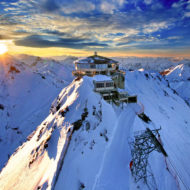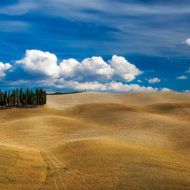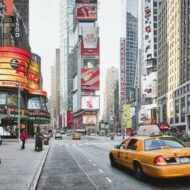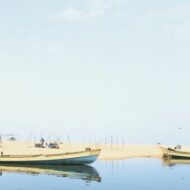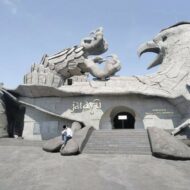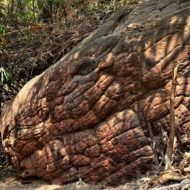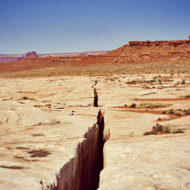Tubingen is a small university town, located near the geographic center of Baden-Wurttemberg, roughly 30km southwest of Stuttgart, Germany.
Tubingen’s population of about 85,000 people is a mixture of students, researchers and academics, medical specialists and “Gorgen” (the people whose families have been there since forever, they used to grow wine berries on the hills around the town. “gorge” ~ cork). The university and its network of hospitals are its economic lifeblood (and the biggest employer in southern Wurttemberg); Eberhard-Karls-Universitaet, founded in 1477, is reputed to be one of the top 5 German universities for studies in German, medicine and law, and Tuebingen serves as a regional medical service hub (they even have a malaria clinic).
About 20,000 students fill Tuebingen’s pubs, cafe patios and university lecture halls during “lecture time” (mid of October until mid of February and mid of April until mid of July). Meanwhile, the high concentration of educated folks with lots of free time means that there are plenty of things to do for the size of the town – 16 choirs; 3 theatres; a fine little art gallery; special lecture series at the university; and, of course, constant parties hosted by the student associations of the various departments (it’s almost a competition to see whether the chemists or the anthropologists do it better). The town does get quiet, though, in the breaks between semesters (Feb 15 – Apr 15, Jul 15 – Oct 15).
The city dates back to 1078 A.D. and is remarkably well-preserved; only one bomb fell in World War II – on the house where Goethe lived (or was it Schiller?). The “old town”, which lies along the Neckar river, looks much as it would have in the 1600s – its crooked, cobblestoned streets will have you walking in circles, when you’re not climbing up and down the stairs built into the sidewalks! The Arts campus of the university lies nearby, while more modern science faculties and student residences perch on the large hills that surround the centre of town. Everywhere you go, there are signs of those who went before, sometimes literally (“Dr. Alzheimer worked in this building”), sometimes less so – you can find Tuebingen’s traces in the writings of Hesse and Hoelderlin…
Tuebingen has fairly good weather compared to the rest of Germany (slightly worse than Freiburg, though). Sudden changes in the weather can make your ears pop heading up into the hills by bus, or just sitting in the marketplace in the centre of town! The medieval architecture, the students’ joie de vivre, the 40% of residents who vote for the Green Party, the absurd charm of the constant festivals that wind through the streets…it’s a unique little spot.
Access : Coordinates: : By train : Tubingen serves as a railway junction with connections to Stuttgart, Black Forest, the Swabian Alb and the region of Lake Constance. From Stuttgart central station it takes just 55 minutes to the centre of Tubingen.
By air : From Stuttgart airport by car via B27 in 25 minutes to the centre of Tubingen, or by airport shuttle, „Airport Sprinter“ No. 828, in 50 minutes to Tubingen’s bus terminal. The bus runs hourly from the central bus stop in front of Terminal 1 of the arrival section.
By car : From the autobahn A8 (Munchen-Stuttgart) via B27 in 30 minutes from autobahn A81 (Singen-Heilbronn) via B28 in 25 minutes. Tubingen contains a Green Zone, where environmental badges are obligatory for every vehicle. This measure was taken to cut down the load of particulate matter
INTERCITY BUSSES : Germany has a lot of interesting cities that are connected with the university town of Tubingen via daily intercity busses. Just follow the links to see schedules or buy tickets online. Intercity bus stops in Tubingen : You get on and out to all intercity busses at the bus station in Europastrasse/Ecke Europaplatz at bus platform D
Highlights :
- In central Tubingen, the Neckar river divides briefly into two streams, forming the elongated Neckarinsel (Neckar Island), famous for its Platanenallee with high plane trees, some of which are more than 200 years old. Pedestrians can reach the island via stairs on the narrow ends leading down from two bridges spanning the Neckar. During the summer, the Neckarinsel is occasionally the venue for concerts, plays and literary readings. The row of historical houses across one side of the elongated Neckarinsel is called the Neckarfront and includes the house with adjoining tower where poet Friedrich Holderlin stayed for the last 36 years of his life as he struggled with mental instability.
- Tubingen’s Altstadt (old town) survived the Second World War due to the city’s lack of heavy industry. The result is a growing domestic tourism business as visitors come to wander through one of the few completely intact historic Altstadte in Germany. The highlights of Tubingen include its crooked cobblestone lanes, narrow-stair alleyways picking their way through the hilly terrain, streets lined with canals and well-maintained traditional half-timbered houses.
- Old town landmarks include the Rathaus (City Hall) on Marktplatz (Market Square) and the castle, Schloss Hohentubingen, now part of the University of Tubingen. The central landmark is the Stiftskirche (Collegiate Church). Along with the rest of the city, the Stiftskirche was one of the first to convert to Martin Luther’s protestant church. As such, it maintains (and carefully defends) several “Roman Catholic” features, such as patron saints. Below the Rathaus is a quiet, residential street called the Judengasse, the former Jewish neighborhood of Tubingen until the town’s Jews were expelled in 1477. On the street corner is a plaque commemorating the fate of Tubingen’s Jews.
- The centre of Tubingen is the site of weekly and seasonal events, including regular market days on the Holzmarkt by the Stiftskirche and the Marktplatz by the Rathaus, an outdoor cinema in winter and summer, festive autumn and Christmas markets and Europe’s largest Afro-Brazilian festival. Students and tourists also come to the Neckar river in the summer to visit beer gardens or go boating in Stocherkahne, the Tubingen equivalent of Oxford and Cambridge punts, only slimmer. A Stocherkahn carries up to 20 people. On the second Thursday of June all Stocherkahn punts take part in a major race, the Stocherkahnrennen. Bebenhausen Abbey lies in the village of Bebenhausen, a district of Tubingen. A subdivision of the pilgrimage route Way of St. James starts here and runs through Tubingen.
Go next : Ulm /





